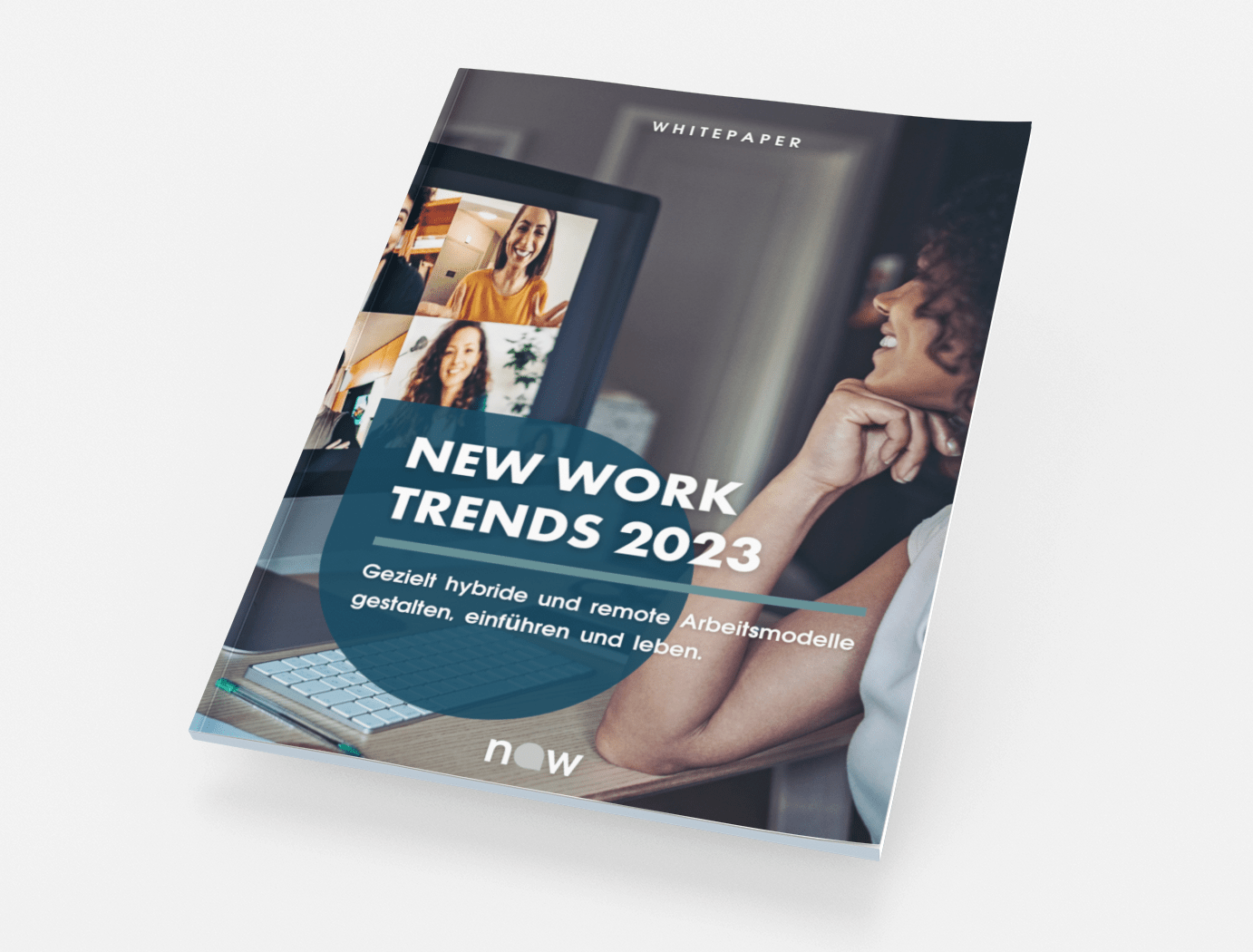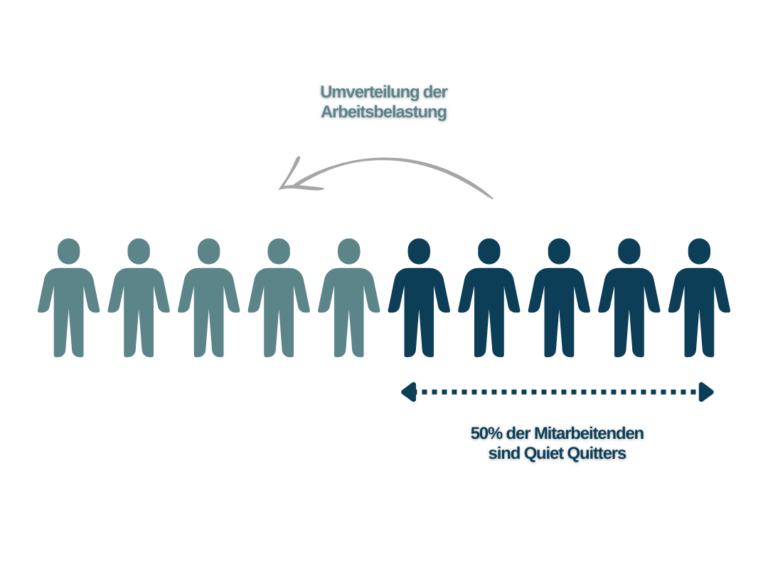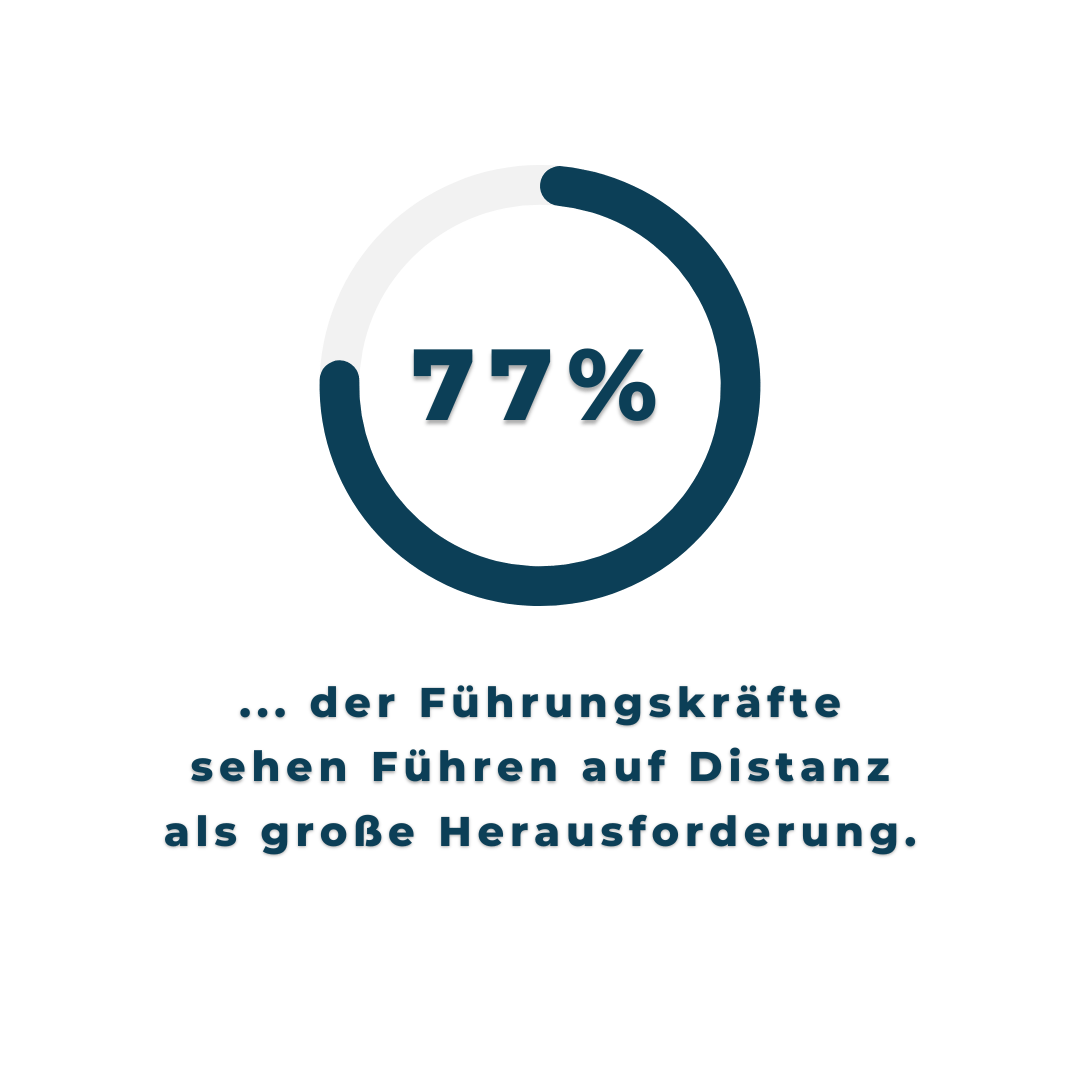
New Work is becoming more present in German companies. Even if Germany is not a pioneer in terms of new work culture, we recognize curiosity and movement in the organizations. However, the transformation process does not conceal a radiant New Work Universe, but first and foremost a whole series of challenges. Which New Work Challenges do we have to face?
New Work Trends for 2023
In our whitepaper, we have summarized ten New Work trends that need to be on the agenda in 2023. They are based on our experience of the past year, formed through collaboration with our customers and clients. In addition to the New Work Challenges described here, there are also some positive potential rockets to bet on. The whitepaper can be here free of charge.

The Quiet Quitting Phenomenon
According to a Gallup report Half of all employees are so-called "quiet quitters". - they don't quit, but they also don't go the extra mile for the company (anymore). This phenomenon is not new. In Germany in particular, this proportion of the passively disengaged has been at a high level for years in a global comparison. A lack of appreciation or a focus on work-life balance are reasons why more and more employees are only doing the minimum to avoid being laid off. However, hybrid working has made this group more dangerous to the organizational fabric. They can slow down processes, online meetings take away the energy and work may be spread across a few strong shoulders.

In times when already half of the employees complain about permanent overload and the danger of burnout is higher than ever before, this phenomenon is a dangerous development. Therefore, companies must become active and find ways, reactivate Quiet Quitters and reduce hidden inequities and overloads.
Predetermined breaking point: remote and presence team
Hand on heart - hybrid work is still a topic for the white collar bubble in Germany. Thus, the discussion about hybrid work is increasingly becoming a luxury discourse for a few who already benefit from "better" jobs anyway. However, the following problems are often neglected.
Hybrid working does not exclusively or automatically offer advantages, but must bedesigned and continuously improved. Only then can it function comprehensively. This requires time, ongoing analysis processes and, of course, appropriate measures. In addition, employees who work hybrid or remotely are not automatically more satisfied, on the contrary. Challenges such as overwork and loneliness are real and not luxury problems.
What is probably the biggest problem is the between the so-called productive and support areas, and this is becoming and this is getting bigger and bigger. Processes no longer work end-to-end. The will to sit down at the table and use common sense to solve challenges at the interfaces has become very low.
It is quite clear that the working conditions of employees in the presence (e.g. in production) must not deteriorate because others work hybrid or remotely. This discussion must continue, otherwise core processes will be jeopardized.

The crisis of lower management
In the Hernstein Management Report, 50% of executives at lower management levels say that they find it completely or at least partially difficult to find a balance between professional and private demands. 77% of managers see remote leadership and leading at a distance as a major challenge (Hernstein Report, 2022). And in Talentista Now's Hybrid Work Index, we also see time and again that executives' view of the work situation in the company is significantly worse than that of employees*. This, of course, makes the work of organizational development and culture change immensely more difficult. When the very people who are supposed to be the positive ambassadors to employees have a rather pessimistic and sometimes even cynical view of their own company, any change initiative is doomed to fail.

Sometimes the phenomenon goes so far that a downright executive depression develops and the energy and willingness to contribute to positive change in the company are zero. In these cases, it is absolutely necessary for organizations to take appropriate measures to relieve the pressure on managers. They must be won back as companions for change and the optimization of work models before a New Work or Hybrid Work project can bear any fruit.

Holistic New Work Support
The New Work Challenges described here when building a New Work work model are just a sample of a large pool of issues we encounter time and again when working with our clients. The challenges vary from organization to organization and need to be analyzed and addressed individually. This is exactly where we offer support for companies, so that together we can build a stable foundation for a working model of the future. Here you will find more information about our consulting services and our Hybrid Work Assessment Tool.
